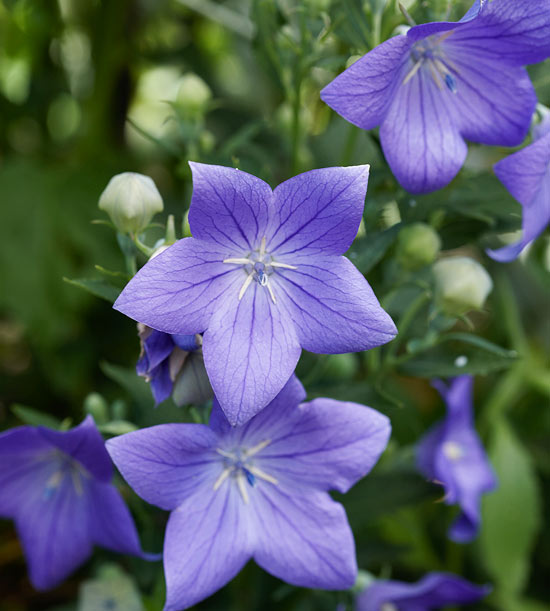






Charming beauty and limitless potential top the list of reasons to grow perennials. These reliable plants can be orchestrated to play symphonies of seasonal color that delight and inspire. A perennial is a nonwoody plant that lives for more than two years and typically dies back as hard frosts embrace foliage. New growth emerges in spring, either from the ground or from remnants of woody stems. Some perennials such as heart-leaf bergenia or mondograss retain foliage year-round, and in warmer regions they stand as evergreen sentries amid seasonal change.
Hidden amid perennials' wonderful attributes, however, lie a few challenges.
continue reading belowWhile some plants feature easy-growing personalities, shrugging off disease or unfurling self-cleaning blooms, most perennials need attention. Because perennials require knowledge to grow, tending them easily becomes a lifelong pursuit filled with fresh learning opportunities.
A common misconception about perennials is that they create a plant-it-and-forget-it garden. While some perennials are low-maintenance, most require ongoing care throughout the growing season, including mulching, watering, and sometimes staking. Deadheading (removing spent blooms) is necessary to increase the number of flowers on plants such as yarrow.
Most perennials flower for a two- to four-week period. Beyond that color-filled time frame -- and without careful planning -- a perennial garden is mostly foliage. The trick is to compose a blend of perennials that flowers in sequence. This process isn't hard to perfect, and you can always count on annuals to sound steady notes of color throughout the growing season.
Because perennials live for more than one season, they're constantly growing and enlarging their borders. It's this changeability that gives a perennial garden its charm. Avoid the temptation to overcrowd young plants; plan for growth.
You'll also need to increase the volume of plants if you want season-long color. When you arrange a planting that combines individual perennials into a harmonious blend of color, texture, and bloom, you'll savor the beauty and discover the inspiration only perennials can give.
Perennials fill several of roles in the garden: star, supporting player, and chorus member. A clump of torch lilies with bold-tint blooms commands attention, as does a full-size rodgersia leaf. Diminutive and feathery silvermound artemisia quietly complements other perennials, such as 'Autumn Joy' sedum, while also inviting closer inspection with its distinctive foliage.
As these versatile beauties grow through the season, plants alternate taking center stage. The swordlike foliage of crocosmia is striking in any season, yet it leaps to life when set ablaze by fiery flower spikes. The silver stems of Russian sage handily anchor a garden bed through the growing season, then when late-summer blooms sparkle purple among the silvery haze, the effect stops traffic.
Diversity earns perennials a faithful following. Lacy, strappy, chunky, wispy -- choose an adjective, and there's a perennial leaf to match. Some perennials tower to 6 feet or more; others hug the ground with neatly sprawling stems. Still others nestle in sumptuous billows in the garden, awaiting their turn in the seasonal spotlight.
Count on perennials to stage garden drama no matter the growing conditions. Plan a garden around deep shade, standing water, desert heat, a steep slope, or heavy clay soil, and you'll find the perfect perennial. In outdoor-living settings, perennials dress views with seasonal charms that might include flowers, fragrance, or butterfly-attracting blooms.
For many gardeners, rich, sweeping borders showcase these comeback bloomers in their best form, but perennials also draw a crowd when tucked into mixed borders, pots, or edible plantings. Perennials can stand alone or play a counterpoint to shrubs, bulbs, annuals, or even hardworking vegetables.
Perennials keep time with the seasons. Anemone and bleeding heart awaken with the earliest rays of spring sunshine. Other perennials, such as monkshood and aster, bid the growing season farewell with brilliant tints. Some, such as Lenten rose, never take a curtain call, lingering through winter with deep green leaves.
These plants grow stronger by the season, increasing in size and flower number as they age. Like well-seasoned performers, mature perennials enrich each scene they grace. While many live as long as 15 years in a typical garden setting, others forge a legacy that can last up to 100 years.
Perennials promise -- and deliver -- versatile, dependable, and adaptable beauty.
Copyright © www.100flowers.win Botanic Garden All Rights Reserved